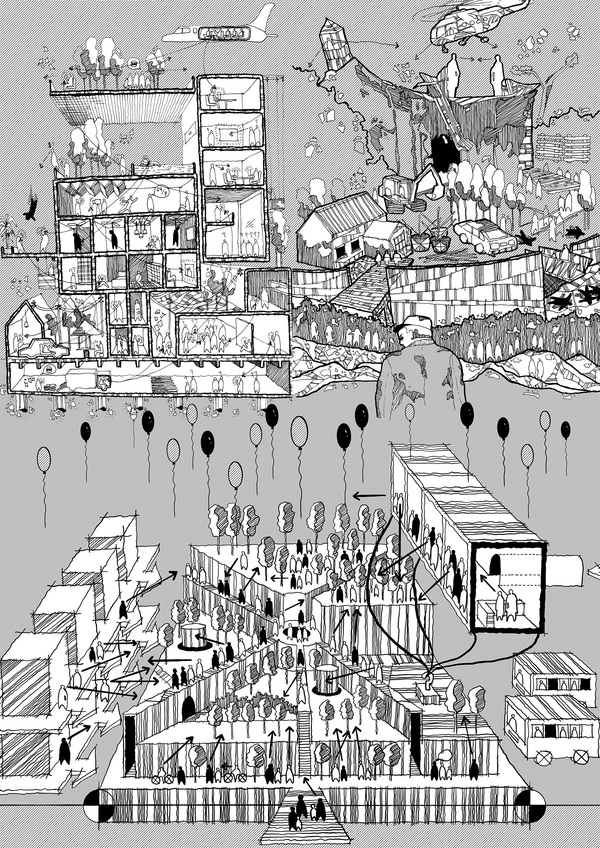The unprecedented COVID-19 pandemic has succumbed us to dwell in the existential cubicle of space known as ‘home’. Quoted from Lebbeus Woods, the border that exists between us ‘manifest the idea of what architecture as a creative force can bring to civic life’, which consists of internal and external forces that can aid in overcoming the impact of loneliness and trigger the need for contact within society. The constructed provocation of non-existent life between buildings instigates the arguments of ‘What if self-isolation for the coronavirus could cause a loneliness epidemic’ and ‘What is the re-imagined role of urban green spaces to suggest new typologies for resilient communities?’. This design thesis is laid down in the hidden gem known as ‘The Secret Lake’, a reservoir that came to life as a result of the Industrial Revolution. A series of mnemonic device was developed in an attempt to materialise memories through imaginative and speculative interventions revolving around the retinal architecture and loss of plasticity.’Image Schemata’, the recurring structure to generate memories of the place will elucidate mental processes involved in envisioning images relating to the past and present. A dedicated individual therapeutic space is deemed as a spatial entity acquired metaphorically and translated into reality through an inner space from the inside of one’s mental realm to the outside, and vice versa. With the intention to connect visitors with each of the mnemonic device, the overall loop of circulation designed becomes ‘a process of constructing the imagination and assemblage of information acquired through various experiences alongside retracing and organising physical and mental realms’, derived from Inner Space by Mariabruna Fabrizi and Fosco Lucarelli. Distinct shades of light and shadow have been introduced throughout this hypothetical journey in a bid to establish a new form of fulfilment, comprising the psychological dimensions of nostalgia, memory and emotions.


